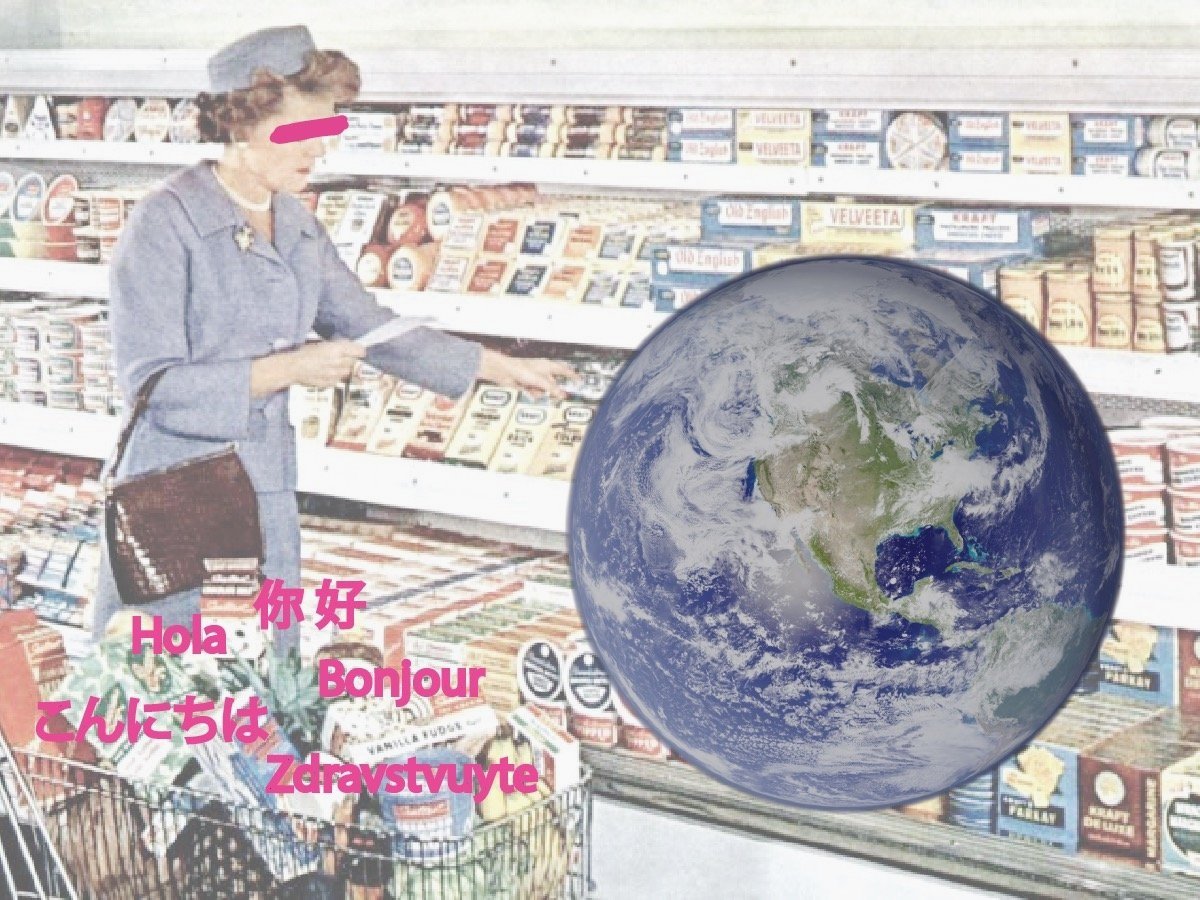The aisles mix stale yellow lighting with electric blue Ramune marble soda. A lady dressed in traditional yellow/orange/green African garb reaches for clear aniseed essence. Pork uterus sits across the counter from fleshy pink groupers whose mouths are agape in shock. Jars of green soursop stack aesthetically next to the oily sofrito. A van full of monks enter in orange cassocks. Crinkly maracuja wafts a sweet-and-sour smell through my mask. I cannot tell whether I’ve landed in Sao Paulo or Osaka or Kingston or Ankara, but I am certainly not in West Palm Beach any longer.
I am, in fact, in Foodtown (an empire-megalopolis-realm-hybrid whose shelves are stocked with foods most of us would have never eaten if only on trips that involved overnight flights.)
It’s a little overwhelming.
Now that grocery stores have morphed into high-fashion destinations amidst quarantine, visiting Foodtown is like a trek to the ends of the Earth; it is safe to ensure that whatever you see in this melting pot of nations equates to a promising vacation.
Upon the absence of international travel, ethnic grocers like Foodtown offer what big-shot airliners, travel planners, and the tourist industry during COVID-19 cannot––a chance to safely experience a myriad of cultures through food.
My shopping cart dangerously careens on wheels pared down into wonky shapes, occasionally bumping into tubs of mango and lychees. The produce section stirs with bustle and Spanish pop songs as people pick through fluorescently colored fruits and vegetables. I weave through sugar canes akin to palm trees in height. Workers with golden skin and rolling r’s stack pears on top of each other, laughing at the balancing act. The display of ten different kinds of okra seems to eliminate competition for any other vegetable, as ladies in brown bonnets with black bows bag them quickly. I feel transported into a store from the first weeks of quarantine––how can a place so busy exist today?
The seafood and meat market smell strongly of ocean and farm land. I peek into tubs of live frogs or live yellow eels or live blue crabs that buzz with eerie movement. Butchers––who wave to me with white gloves and enthusiastic smiles––catch swimming tilapia with fish nets in front of a lengthy line. The sheer variety of seafood is astonishing––unlike the average Walmart or Target, Foodtown houses almost any version of almost any product (thetownpart is literal.)
As a quarantine-sick student––as so many of us are––peering into different buckets of seafood and produce starkly reminds me that this is not another trip to Target or Publix, but a near-guarantee that you will see something unpredictable, and enticing. Admittedly, yes, it is “just another store,” and a potential risk to contracting the virus. But if you are accepting the risk of buying groceries within stores, Foodtown comes close to a style of entertainment and cultural immersion that I have lately felt bereft of as a former-frequent-traveler.
And although many of its products are excitingly pretty in pink (dragonfruit) or smell of dried roses (tea), it’s the hanging cow buttocks and fresh pigs’ ears that capture the essence of the store: What seems strange to you is not strange to others. Get used to it. (Which is not what aPalm Beach Post article highlighting Foodtownin 2016 agreed with, ridiculing Foodtown meat cuts that places like Jamaica, Italy, and Japan eat often.)
In the Hispanic foods aisle, a worker stacking beans upon beans upon beans explained that he is from Ojocaliente, Mexico, where most everyone is a farmer. Amidst Flan mix and pacaya in jars, he says he doesn’t think about much except for the farming.
“We have many hot springs, too, in Ojocaliente” he says in this little aisle, grows quiet, and softly laughs.
This is what Foodtown does to you.
(I’d like to think it also offers a home for those who don’t find one in the white-washed streets of suburban Florida. For me, I feel that such a store is so rare to find that we should indulge in celebrating it.)
Eventually, when I end up back in the car and retrace my steps home, I am exhausted. On the intersection of Military and 45th, in the old Winn Dixie with a violently yellow coat of paint and wicked shopping carts, I soared through Foodtown, somewhere between 10,000 feet in altitude and West Palm Beach.

